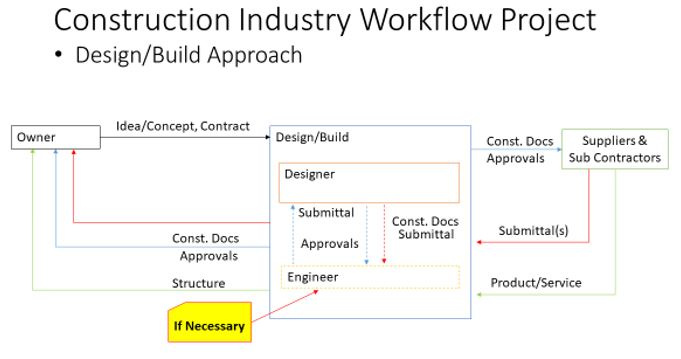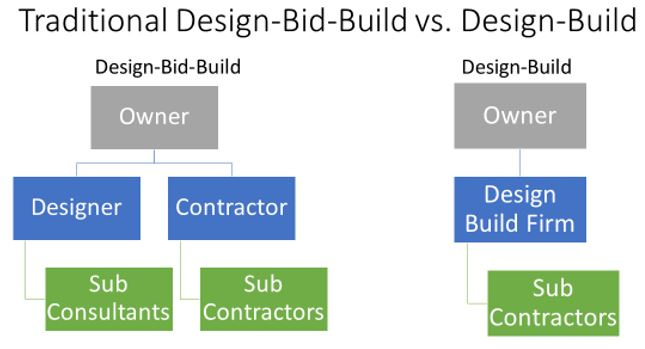Streamlining Construction Through Design Build
The following content is part of SBCA’s Construction Industry Workflow Initiative, which is exploring how the construction industry currently functions and the role component manufacturers play within that structure. Your feedback is encouraged to help us complete this project, email info@sbcacomponents.com to provide your input.
Design Build is an approach that combines the design processes typically performed by an architect or building designer and the construction responsibilities delivered by the general contractor (GC). Rather than a project owner contracting separately for design and construction, design build projects are contracted under one agreement that contains the design aspects as well as the construction duties. Proponents of design build argue its advantages lie in streamlined communication, a single relationship for owners to manage, centralized budget management, shorter construction times, and reduced change order costs. Opponents, however, argue there is less accountability, and the bidding process is hampered. Cost vetting can become complacent.
Potential Advantages

 In traditional construction practices with two separate contracts for building design and construction, efficient communication can be challenging and communication errors can add significant time to the construction process. Two separate contracts can also complicate the management process for the project owner and require them to referee disputes on everything from cost overruns to schedule changes. With design build projects, the owners have one contract and one point of contact to manage with respect to the project, lessening the burden and streamlining the decision making process.
In traditional construction practices with two separate contracts for building design and construction, efficient communication can be challenging and communication errors can add significant time to the construction process. Two separate contracts can also complicate the management process for the project owner and require them to referee disputes on everything from cost overruns to schedule changes. With design build projects, the owners have one contract and one point of contact to manage with respect to the project, lessening the burden and streamlining the decision making process.
Another advantage to design build is a better understanding of construction costs during the design phase for specific features and/or change orders. Including construction personnel in the design phase streamlines many of the decisions for the owner early on. When owners work with an architect or building designer, many questions arise over what specific materials or construction techniques will cost, which can lead to speculation and potentially misguided estimates. That, in turn, leads to budget overruns later on. Firms that provide both design and building services are better equipped to offer cost insights given their experience and expertise in the construction process.

Streamlined communication is another benefit of a design build construction approach. With all parties in the design build process contained within a single firm, those people are going to have a better, cohesive working relationship and likely a culture of rapid response when questions or issues arise either in the design phase with construction-related questions, or in the field when questions arise regarding a specific construction detail. Design build firms streamline the request for information (RFI) process within a single organization. Similarly, change orders are more cost effective given their ability to perform work in-house rather than route changes through an architect or building designer that comes with additional fees and is less efficient from a time perspective.
Overall, design build is a creative approach to construction project delivery and can be a beneficial choice for a wide array of projects. For project owners who have experience from prior projects and have a precise understanding of what they desire from a builder, design build is an efficient and cost-effective approach to construction. While those who might not be as familiar with the construction process, or aren’t familiar with a design build firm’s work, a more traditional approach may be more desirable. Those in the construction industry supply chain should learn how to best engage design build firms when working on those projects and learn how to route communications including RFIs, proposals and status reports.
